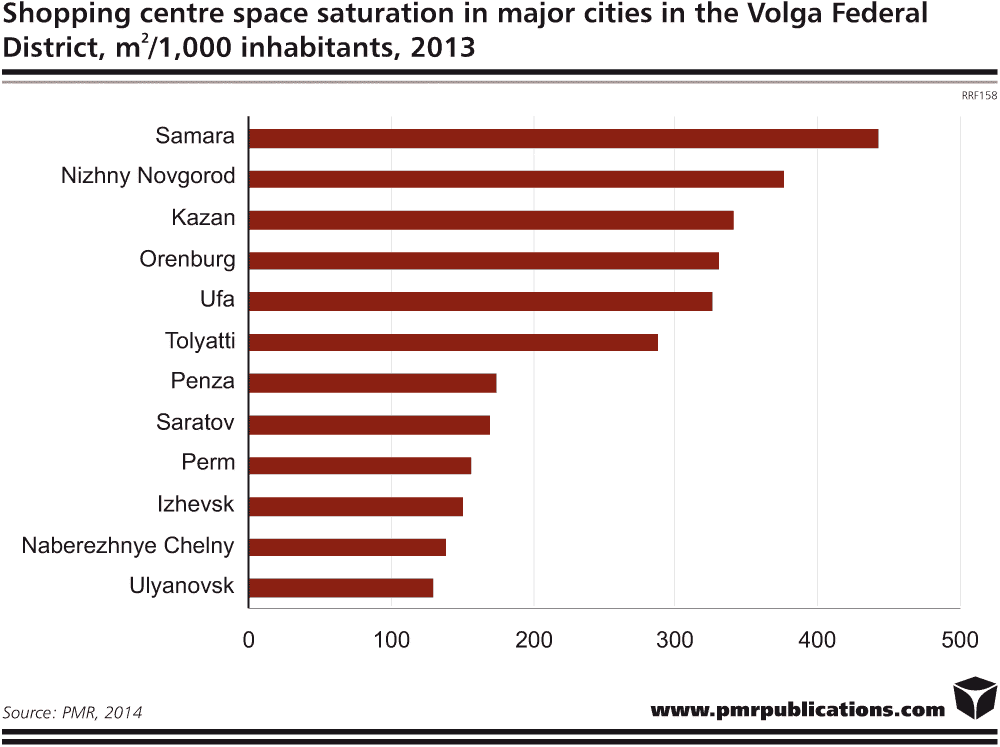As indicated by the results of PMR’s latest report, “Construction sector in Russia 2014-Regional focus. Development forecasts for 2014-2019”, after 2013’s 1.5% contraction, Russia’s construction industry is expected to post moderate near-term growth rates. The increase will be largely fuelled by state-funded civil engineering projects, mostly for the development of the country’s transport and heavy industry infrastructure.
Of high priority will be projects deployed in regions with vast natural resource potential. The Siberian, Urals, and Far Eastern Federal Districts are expected to be the major beneficiaries. The Urals Federal District is expected to have the fastest developing construction market of all federal districts over the next three years. However, this performance will be achieved thanks to a low comparison base, after three years of contraction, including a 13% drop in 2013. The recovery will be strongly supported by the government’s commitment to the acceleration of transport infrastructure construction initiatives in the district as well by multi-billion rouble projects rolled out by oil and gas companies.
The district’s construction market is dominated by the civil engineering segment. According to PMR, this is responsible for over 60% of the market’s output, largely supported by investment in heavy industry. Tyumen Province, including the Yamal-Nenets and Khanty-Mansi Autonomous Districts, is also known as the country’s oil and gas region. In addition, Chelyabinsk Province is one of the key metallurgical regions in Russia. In the years to come, the market will continue to expand largely on the back of the construction of related infrastructure for the development of oil and gas fields in Tyumen Province. By 2030, RUB 6.4tr ($212bn) is to have been invested in the development of several oil and gas fields in Khanty-Mansi Autonomous District including:
- Priobskoye, Samotlor, Prirazlomnogo and Malobalyksk oil fields by Rosneft
- Southern segment of the Priobskoye oil field by Gazprom Neft
- Fedorovsk oil field by Surgutneftegaz.
In addition, Gazprom plans to spend about RUB 2.4tr by 2030 on developing related facilities for the exploration of natural gas reserves on the Yamal peninsula. In the near term, increasing support for the construction industry in the Urals Federal District will be provided by projects to be implemented in Yekaterinburg as part of preparations for the FIFA World Cup in 2018.
Solid growth will be recorded in the Volga Federal District, where the construction market is to average growth over the next three years of an estimated 3% in real terms. Unlike Urals Federal District, where the market will be supported overwhelmingly by the civil engineering segment, construction market development in Volga Federal District is expected to be more balanced, with the highest average growth likely to be achieved by the non-residential construction segment, which is driven mostly by industrial construction projects. Volga Federal District is the second largest contributor to processing industry output in Russia and would take the top spot if Central Federal District is analysed without the contribution of the city of Moscow. According to PMR estimates, the non-residential construction segment was responsible for 18% of the district’s construction output in 2013. In the near term its influence will gradually increase, mostly on the back of growing activity in the hospitality and shopping centre construction segment. Hotel construction output will witness a boost mostly thanks to projects to be implemented as part of preparations for the 2018 FIFA World Cup event, with the major cities of four administrative regions (Kazan, Nizhny Novgorod, Samara, Saransk) among the eleven cities selected to host the competition.
As for the shopping centre construction segment, it has posted impressive growth rates in recent years and solid results are also projected to be achieved in the district in the near term. The strong upward trend has been supported by the fact that retail real estate developers in Russia have preferred to invest in large cities. In fact, five out of 15 cities with more than 1 million inhabitants and seven out of 21 cities with 500,000-1,000,000 inhabitants are situated in the Volga Federal District.
Samara is the most saturated city in the district in terms of quality shopping space per 1,000 inhabitants. By the end of 2013, the indicator had reached 443 m². Nizhny Novgorod ranks as the 2nd most saturated city in the district, with 376 m² and the podium is completed by Kazan, with 340 m² of quality shopping centre space per 1,000 inhabitants. Samara, has 10 shopping centres with more than 10,000 m² of GLA. Three of these have more than 50,000 m²: MEGA (GLA – 108,400 m²) – developed by IKEA, Cosmoport (101,000 m²), and Moskovskiy (79,000 m²), developed by Victor and Co CMC. In 2014, Victor and Co is expected to complete its third super-regional mall in Samara: Ambar, which is to have 90,000 m² of gross leasable area.
In 2014, less impressive market growth rates will be recorded in Southern Federal District, where the market is expected to contract. Such a weak performance will come after the market posted double-digit growth rates three times during the past four years. However, the construction sector in the district is projected to resume an upward trend in 2015, partly supported by projects to be implemented in Rostov and Volgograd provinces as part of preparations for the 2018 FIFA World Cup tournament.
Source: pmr
